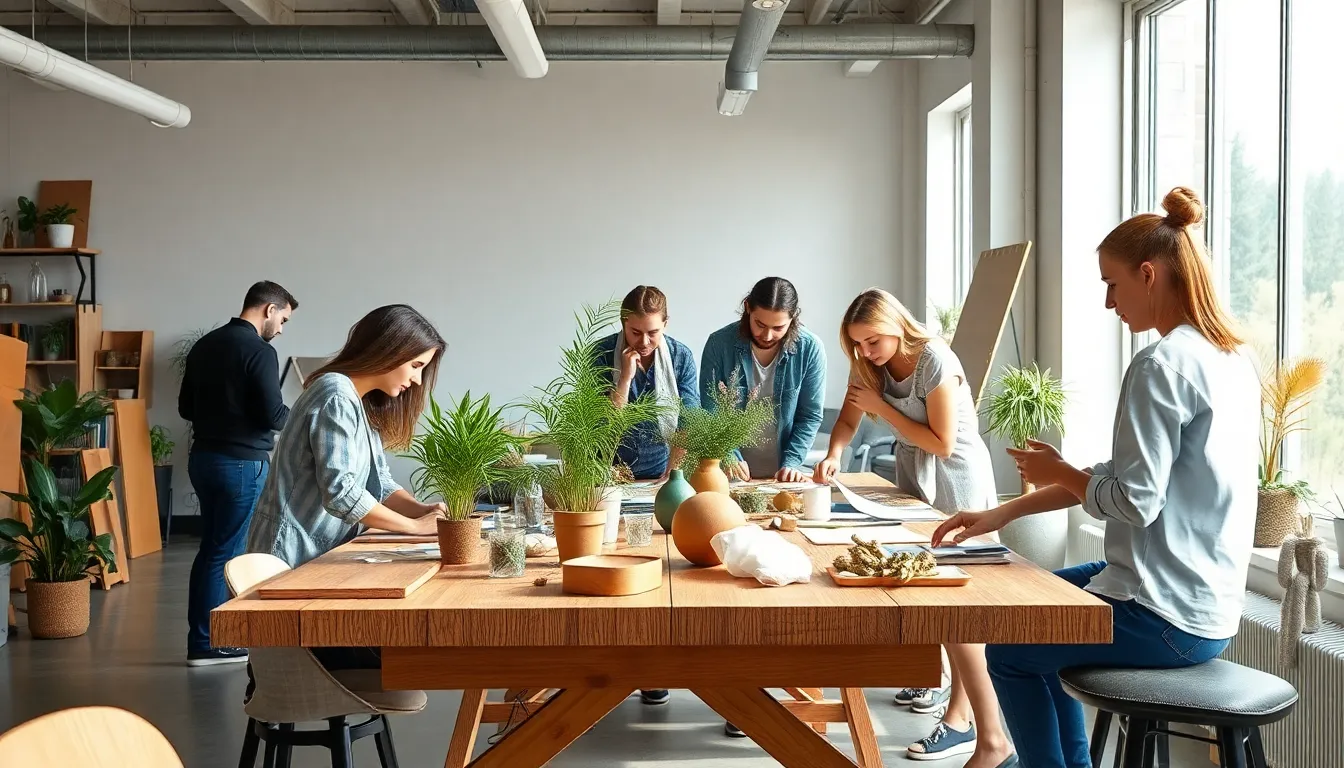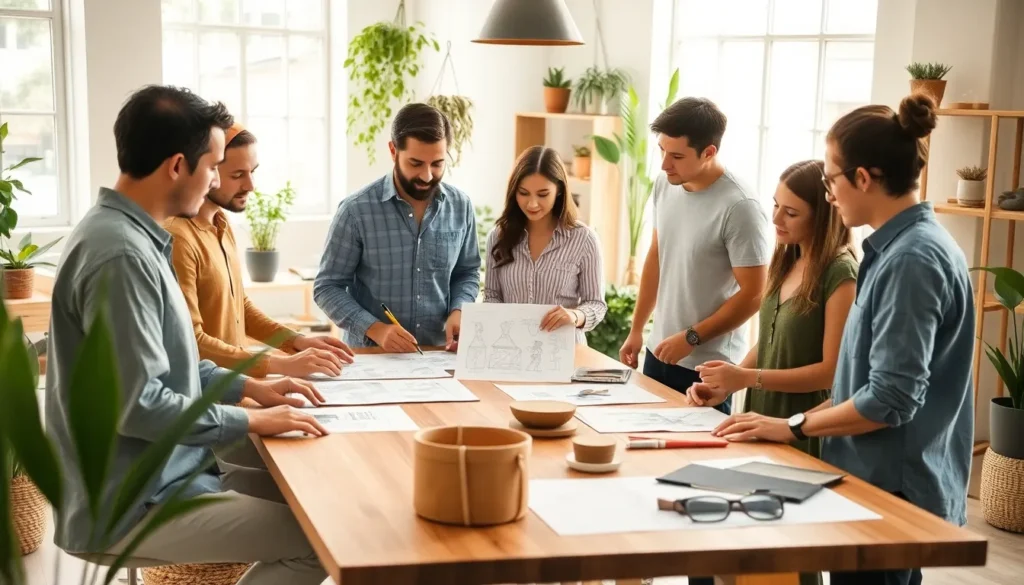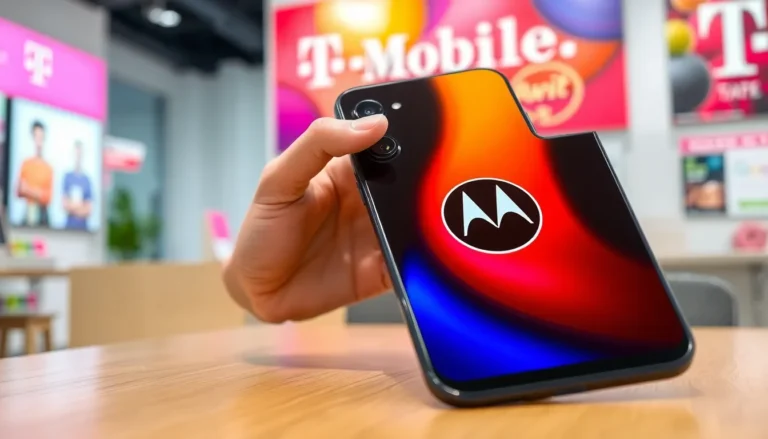In a world where plastic seems to outnumber people, eco design is the superhero we didn’t know we needed. Imagine a realm where creativity meets sustainability, where every product not only looks good but also does good. It’s like giving Mother Nature a stylish makeover while ensuring she stays healthy and happy.
Table of Contents
ToggleWhat Is Eco Design?
Eco design integrates environmental considerations into product design and development. It aims to minimize adverse effects on ecosystems and human health throughout a product’s lifecycle. Designers emphasize the use of sustainable materials. Renewably sourced components such as bamboo, recycled metals, and organic fabrics exemplify eco-friendly options.
Effective eco design also involves reducing energy consumption. Each phase from production to disposal receives scrutiny for carbon footprint and waste generation. Incorporating principles like durability and repairability further enhances the longevity of products. This approach encourages consumers to engage in sustainable purchasing behaviors.
Collaboration with specialists in sustainability helps designers ensure compliance with environmental regulations and best practices. Designers utilize tools to assess the environmental impact of their products at each stage. Innovation plays a vital role in eco design, leading to creative approaches that challenge traditional norms.
The aesthetic appeal of eco-designed items does not compromise their functionality. They often exhibit unique styles that attract consumers interested in both form and sustainability. Eco design promotes an inclusive approach by involving stakeholders, such as communities and manufacturers, throughout the design process.
Legislation increasingly supports eco-friendly practices, urging companies to adopt sustainable methods. Transparency in sourcing materials, production processes, and environmental impact fosters trust among consumers. The active shift toward sustainable design pushes industries to reconsider their practices and prioritize ecological balance.
Ongoing education within the design community strengthens awareness of environmental issues. Each initiative contributes to a larger movement aimed at harmonizing innovation with ecological responsibility. This results in measurable benefits for both consumers and the planet, marking eco design as a significant step toward a sustainable future.
Principles of Eco Design

Eco design emphasizes integrating sustainable practices into product development, leading to healthier environments and communities. A firm grasp of essential principles shapes effective design strategies.
Sustainability
Sustainability stands as a core principle in eco design. Designers prioritize using renewable resources, which reduces the depletion of natural materials. Choosing biodegradable materials ensures products break down safely, minimizing landfill waste. Implementing design for disassembly facilitates recycling at the end of a product’s life cycle. Moreover, strategies focusing on life cycle assessments (LCAs) enhance understanding of a product’s environmental impact from production to disposal. Sustaining ecosystems becomes the ultimate goal, fostering a harmonious relationship between human activity and the environment.
Resource Efficiency
Resource efficiency drives eco design by maximizing utility while minimizing waste. Designers analyze material usage to identify opportunities for reduction without compromising quality or performance. Utilizing recycled and upcycled materials minimizes the need for virgin resources, contributing to sustainability. Efficient manufacturing processes reduce energy consumption and emissions, enhancing overall productivity. Investing in durable designs also curbs the frequency of replacements, promoting a more sustainable consumption model. Resource efficiency reflects a commitment to not only conserving materials but also reshaping industry standards for responsible production.
Benefits of Eco Design
Eco design provides numerous advantages that align environmental responsibility with practical benefits. These advantages encompass eco-friendliness and economic growth.
Environmental Impact
Eco design significantly reduces pollution by utilizing sustainable materials. Designers focus on renewable resources, minimizing plastic usage and carbon emissions. Eco-friendly practices, such as energy-efficient production methods, diminish overall waste and enhance resource conservation. Products crafted with eco design principles often meet stringent environmental regulations. This commitment fosters healthier ecosystems, leading to improved biodiversity. Designers also prioritize lifecycle thinking, encouraging consumers to consider a product’s environmental footprint from production through disposal. Each stage of a product’s life is assessed for potential impact, promoting sustainability.
Economic Advantages
Investing in eco design presents economic benefits for businesses. Companies often experience cost savings through efficient manufacturing that reduces resource consumption. Eco-designed products attract a growing market of environmentally conscious consumers, leading to increased sales. These products frequently enhance a brand’s reputation, positioning companies as leaders in sustainability. Government incentives for eco-friendly practices further improve financial outcomes for businesses adopting these strategies. Long-lasting products appeal to cost-conscious consumers, fostering repeat purchases and brand loyalty. Overall, these economic advantages contribute to a sustainable and profitable future for businesses engaged in eco design.
Challenges in Implementing Eco Design
Eco design faces several challenges that hinder its adoption in various industries. Economic factors play a significant role, especially cost considerations.
Cost Considerations
Implementing eco design often incurs higher initial costs. Sustainable materials like bamboo and recycled metals can be more expensive than traditional options. Production processes may require investments in new technologies or methods, further increasing expenses. While these upfront costs can deter companies, long-term savings emerge through reduced resource consumption and energy efficiency. As businesses recognize the potential for cost savings, they contribute to a more sustainable future, making eco design an appealing investment.
Consumer Awareness
Consumer awareness significantly impacts the success of eco design initiatives. Many consumers lack knowledge about the benefits of sustainable products. Without understanding the environmental impact of their choices, they may prefer cheaper, less sustainable options. Education plays a crucial role in changing consumer behaviors and preferences. As awareness grows, demand for eco-friendly products rises, prompting companies to adopt more sustainable practices. Engaging marketing strategies that highlight eco design’s advantages can bridge the gap between consumers and sustainable solutions.
Future Trends in Eco Design
Emerging trends in eco design promise to shape sustainable product development. The circular economy concept gains traction, encouraging closed-loop systems where materials are reused or recycled. This approach minimizes waste and promotes responsible sourcing.
Smart technologies play a crucial role in eco design’s evolution. Integration of IoT devices enables real-time monitoring of product performance and resource consumption, enhancing efficiency. Data analytics provide insights into consumer habits, driving further innovations in design.
Designers explore biophilic design principles, which incorporate natural elements into products and environments. This trend fosters a connection between people and nature, promoting mental well-being and environmental awareness. Research indicates that incorporating greenery can improve user satisfaction and reduce stress levels.
Collaboration among stakeholders becomes essential for advancing eco design practices. Partnerships between designers, manufacturers, and environmental organizations enhance transparency in sourcing and production. Such alliances foster shared knowledge, leading to better compliance with sustainability standards.
Regulatory frameworks increasingly support eco-friendly initiatives. Policies promoting sustainable practices incentivize businesses to adopt eco design principles. Financial support from governments accelerates the transition towards greener product development.
Consumer demand for sustainable options continues to rise. Shoppers show a willingness to pay a premium for eco-friendly products, boosting market opportunities. Brands that prioritize sustainability gain a competitive advantage.
Renewable energy integration into production processes emerges as a vital trend. Manufacturers adopting solar or wind energy reduce their carbon footprints, aligning with eco design goals. Businesses experience cost reductions in energy bills, providing economic incentives for such investments.
Adaptability to changing consumer preferences shapes eco design’s future. Designers who embrace flexibility can quickly respond to market demands, ensuring relevance and sustainability. Staying informed about evolving environmental concerns allows for continuous improvement in eco design practices.
Eco design represents a transformative approach that harmonizes creativity with sustainability. By prioritizing renewable materials and innovative practices, designers can significantly reduce environmental impacts while appealing to conscious consumers. The shift towards eco-friendly products not only fosters healthier ecosystems but also enhances brand reputation and profitability.
As the demand for sustainable solutions grows, collaboration among stakeholders will be crucial in overcoming challenges and advancing eco design initiatives. Embracing these principles not only addresses pressing environmental issues but also paves the way for a future where design and sustainability thrive together. The journey towards a more sustainable world is ongoing, and eco design is at the forefront of this vital movement.




